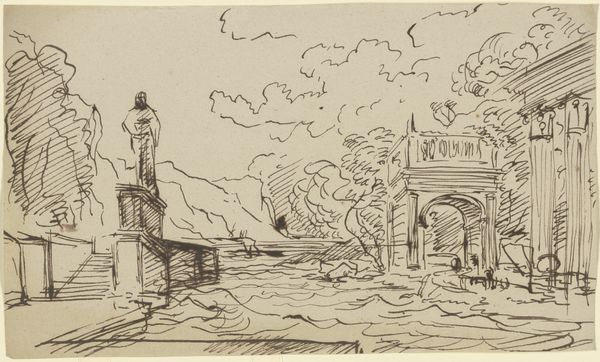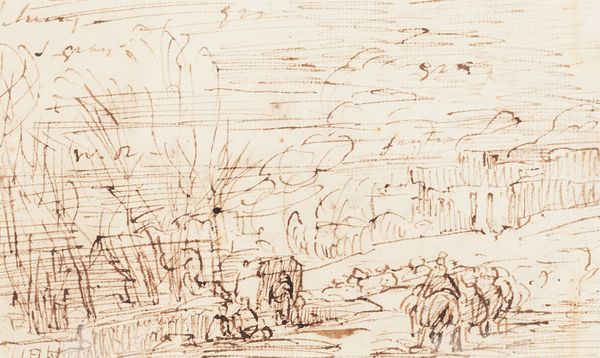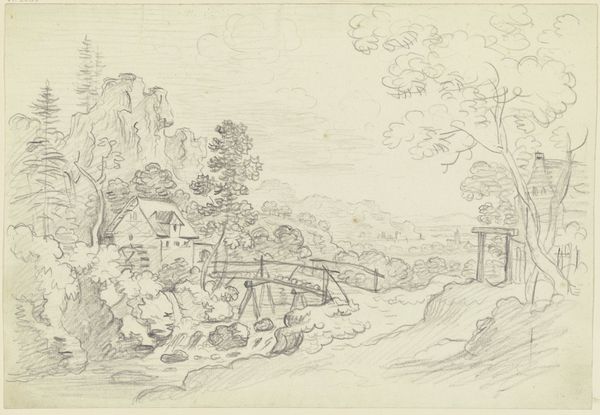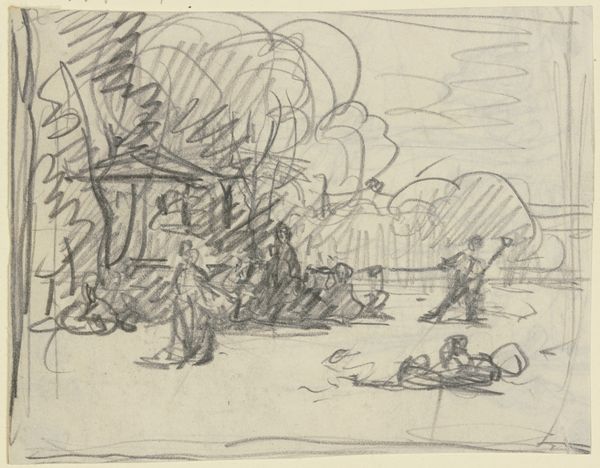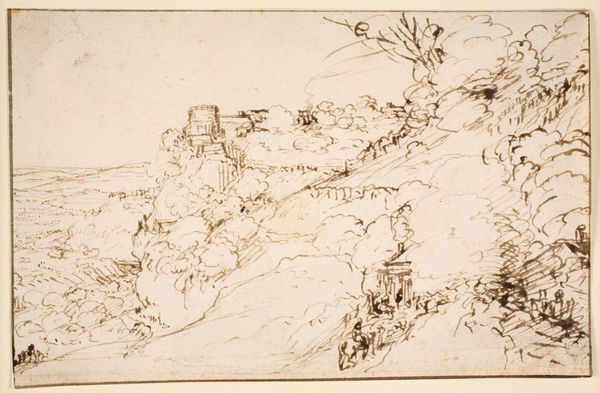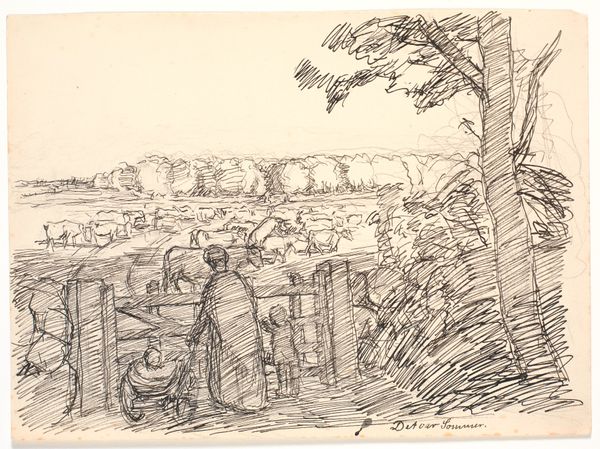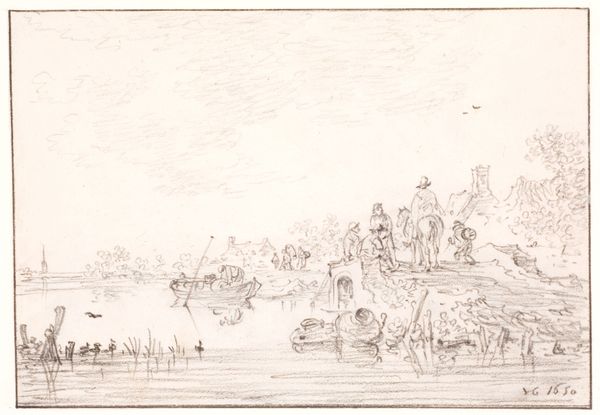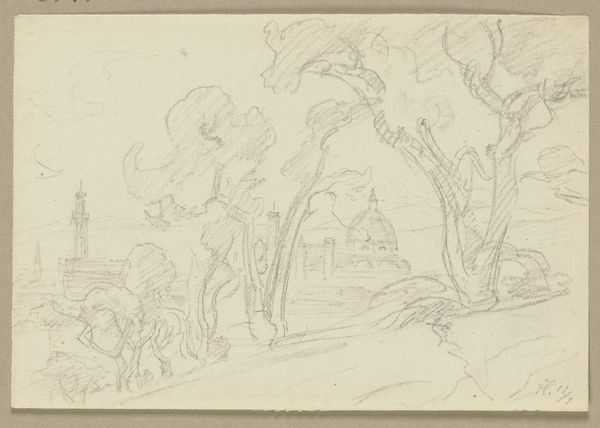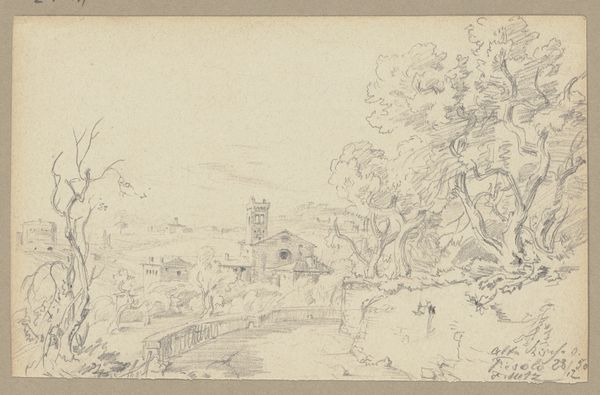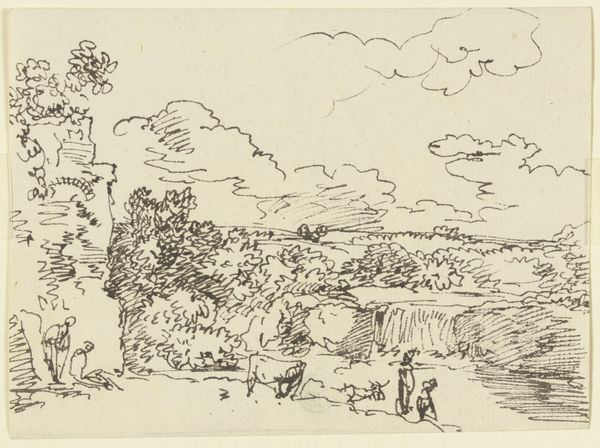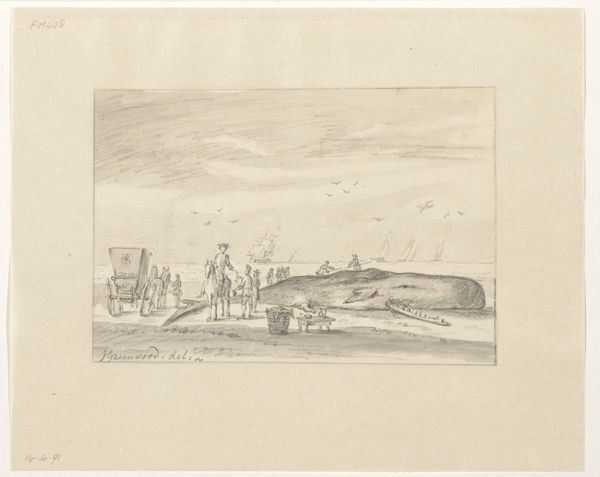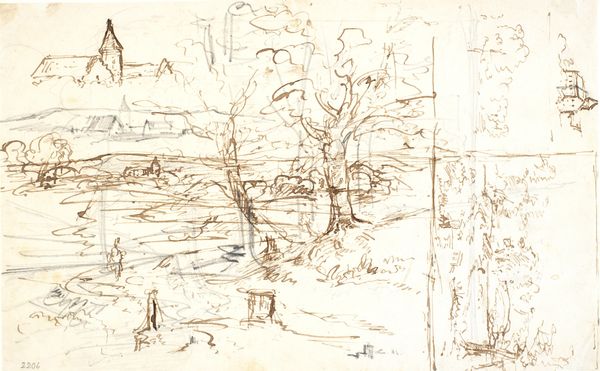
drawing, paper, ink
#
drawing
#
ink drawing
#
landscape
#
paper
#
ink
Copyright: Public Domain
Curator: What strikes me first is the atmospheric quality of this pen and ink drawing on paper titled “Italian Landscape.” It is held here at the Städel Museum, created by Johann Christoph Rist. A rather captivating landscape… but, is it unfinished, or something else entirely? Editor: Its immediacy is captivating, as if capturing a fleeting glimpse of memory. Look at those rough-hewn buildings set against the softly rendered sky, the suggestion of a rain shower beyond. There is such power to suggest, not painstakingly render. I feel that there is longing here. Curator: I agree—the tension between defined architectural forms and the fluidity of the clouds is interesting. There’s an interplay of permanence and transience. I keep wondering about the rapid lines – those quickly sketched figures at the foreground almost obscured by a scrawled tangle of pen strokes. Editor: Precisely! Those figures lend a narrative element, a pilgrimage perhaps, or wanderers set against an idealized yet solid Italian vision. Those repeated towers certainly conjure a sense of the historical Italian strongholds; one wonders if the ruined condition suggests some kind of past battles or forgotten empires. What is remembered fades and changes shape... much like those quickly shifting clouds. Curator: Note, too, the subtle shifts in line weight. A darker, more deliberate hand etches the buildings closest to the viewer. By contrast, the mountains in the distance almost dissolve into the paper itself. This is very skillfully implemented by Rist. The composition relies not just on symbolism but in structural clarity, using perspectival strategies to move our eyes carefully through each structural part. Editor: It invites reverie. And it serves to remind how the familiar archetypes of landscape continue to carry a potent emotional charge through art; ink on paper evoking more than a view. It invites us to reflect on time itself. Curator: Indeed. Thinking structurally, the use of line and space is far from incomplete – the balance evokes an artful reduction and clarity. Editor: I feel more reflective having explored the symbols used to express temporality so well here. Curator: Agreed. By analyzing Rist’s intentional visual choices, and line-work especially, a remarkable structure emerges, a meditation of form and its emotive power, so wonderfully rendered.
Comments
No comments
Be the first to comment and join the conversation on the ultimate creative platform.
